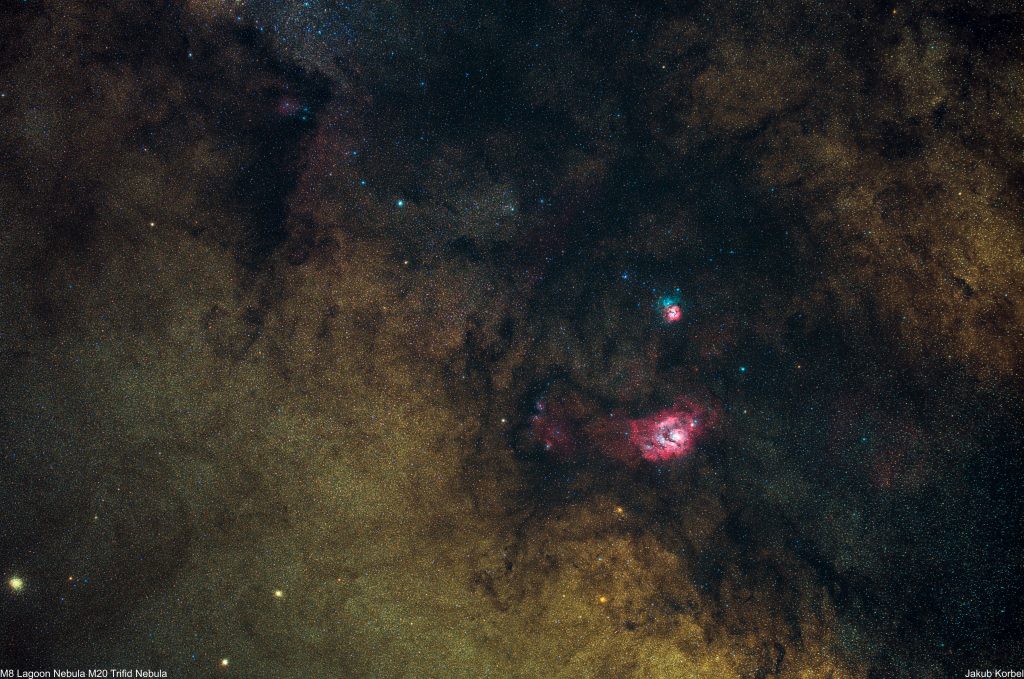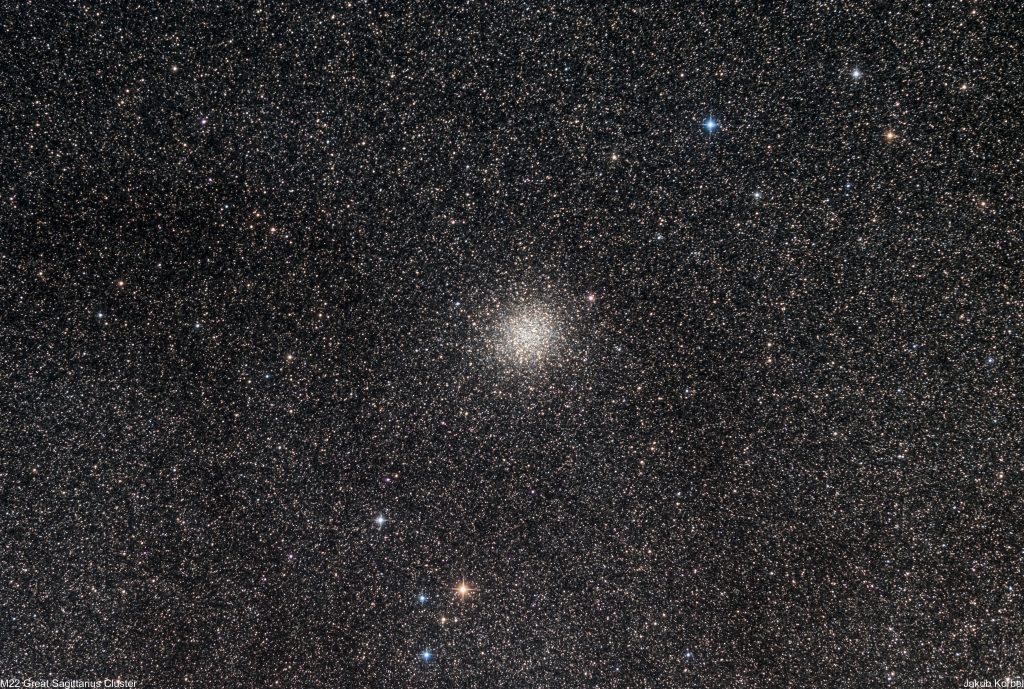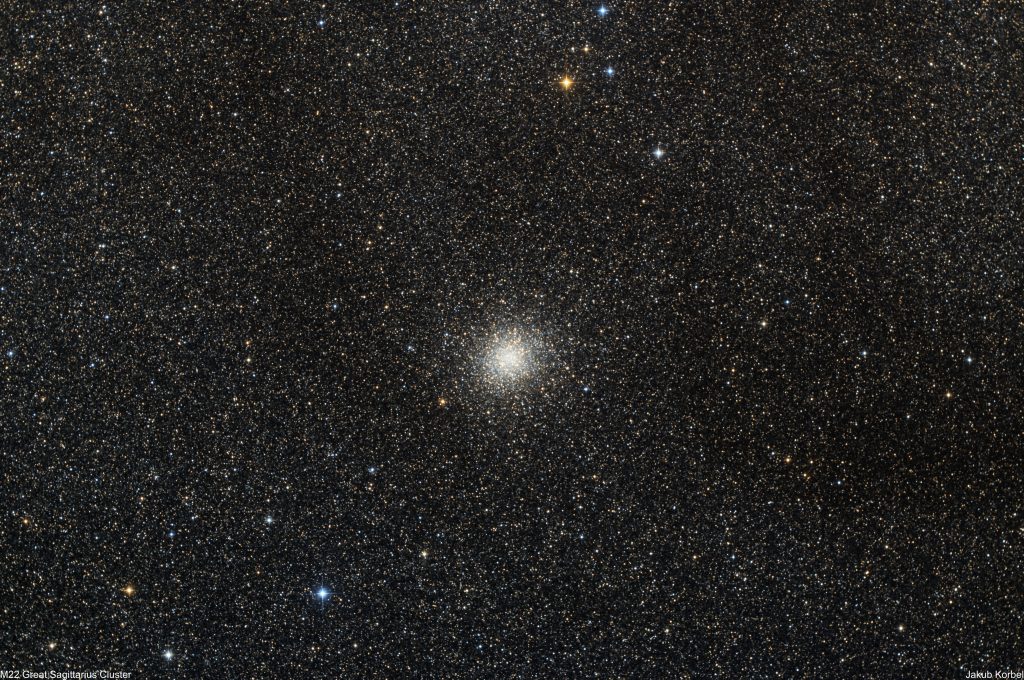Constellation Sagittarius is full of deep space objects. I think we all agree that the most beautiful one is the Lagoon nebula, accompanied by the Trifid nebula. I captured these nebulae already, but with a much longer focal length. This time I used a significantly shorter telescope – only 180 mm to reveal the other deep space objects. The bright star at the bottom left is the star Kaus Bolearis, where the archer has his head. This star is surrounded by the globular clusters: M22 Great Sagittarius cluster on the left and M28 on the top.

Technical details:
| Lens | Askar FMA180 F4.5 |
| Camera | Canon EOS 6Da |
| Mount | iOptron Skyguider Pro |
| Exposure | 50x60s, ISO 1600 |
| Date | 2021-07-03 |


